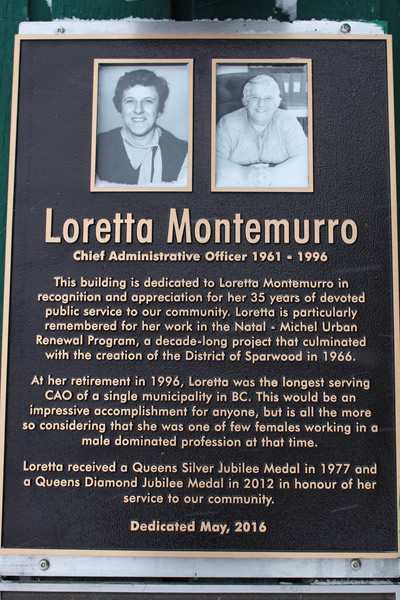A town built on coal remembers its fallen
Learn about the long-lost coal mining communities of Michel-Natal as well as the men claimed by the coal mines of the Elk Valley.

In passing, Sparwood looks like a quiet mountain town. In reality, Sparwood’s history is anything but quiet—it is rich with emotion. Despite the townspeople's collective struggles in a mining community in the early 20th century, their maintained spirit and community pride have carried them forward. Now, the town wants to remember and share the stories of their fallen.
Two years ago, the town council of the District of Sparwood began the lengthy process of preparing for the 50th anniversary of the Balmer North Explosion of 1967. The Balmer North Explosion killed 15 men and wounded 10. To commemorate this disaster, as well as the other mining deaths in the Elk Valley, Sparwood has commissioned a statue and an adjacent granite memorial wall.
“We want to pay homage to the lives that were lost,” said Terry Melcer, the chief administrative officer of the District of Sparwood. “We thought there should be some sort of representation of a miner,” she said. “It’s a very humble position. And in the early years of mining, it was a dangerous job.”
The memorial wall contains 181 names of those who passed from mining disasters in the area that have been collected and confirmed over the past two years. The memorial will be unveiled April 3, 2017.
“These were contract miners,” said Melcer. “The miners would take chances because the more they could get out, the more they made. Those dangers shaped the fabric of the community.” This memorial will stand as a reminder to the community and its visitors of the daily dangers coal miners faced and the pride of community they embodied.
After the founding of the Crowsnest Coal Company in 1889, the Elk Valley grew quickly as workers arrived and new mines set up camp. “This was an area for jobs for many people that were new immigrants to Canada,” said Melcer, referring to the population boom after the discovery of coal in the valley. “There was a real mixture of culture.”

In the early years of coal mining in the valley, the area looked significantly different. Sparwood was settled last, as it was farther from the mines. Instead, early settlers built their homes near the mines in the long-lost towns of Michel and Natal along Highway 3. These two communities were situated directly between two mountains being actively mined by the Crowsnest Pass Coal Company. There were subsections within those areas and Sparwood as well: Little Italy and Little Chicago, for example.
Despite the mixture of cultures, the community was close. “The underground miners had real camaraderie because they depended on each other for their lives,” Melcer said. “That carried through to their community activities—lots of community spirit.” The vibrant towns of Michel-Natal were proud of what they had built between the dust, soot and smoke of the coal mines.
The communities in Michel and Natal were forcibly relocated to Sparwood under the direction of an “urban renewal scheme” directed by the Crowsnest Pass Coal Company and Canadian government. “It was a challenging time for them,” said Melcer. “They weren’t necessarily compensated for their homes.” The emotional and controversial story is lengthy as it spans over a decade, but it's a story worth asking about when visiting Sparwood. These towns have since been demolished, and the land reclaimed by nature.
For visitors hoping to learn more, the Michel-Natal-Sparwood Heritage Society operates a Community Museum. The museum tells stories of the town’s hardships and triumphs, struggles and strong spirit. The museum is home to artifacts and photographs of the long-lost Michel-Natal.






